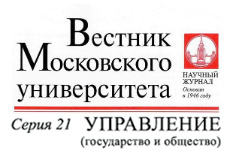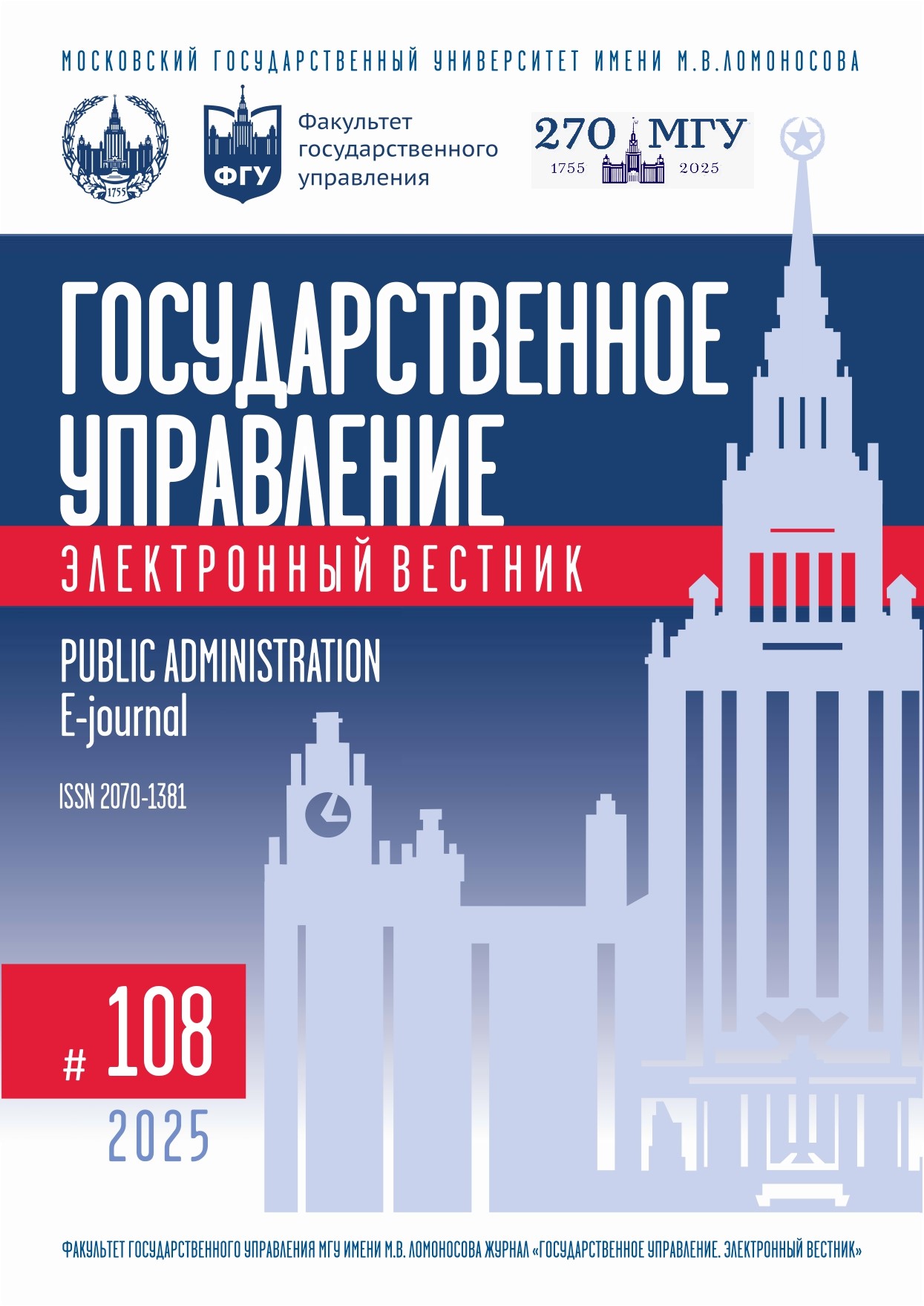University as an Ambidextrous Organization
DOI:
https://doi.org/10.55959/MSU2070-1381-108-2025-172-184Keywords:
Organizational ambidexterity, university, strategic management, exploration and exploitation, innovation management, organizational ambidexterity prerequisites.Abstract
The article analyzes the university activities (using the example of Lomonosov Moscow State University) from the standpoint of the organizational ambidexterity concept, which is based on the search for an optimal balance between basic and incremental innovations. The main prerequisites for four types of ambidexterity are identified: sequential (ensuring punctuated equilibrium), structural (creation of dual structures, development of a quality management system), contextual (organizational culture and behavioral factors, support for meta-routines, a system of labor incentives and career growth) and interorganizational (market orientation and proactivity, creation of alliances). A distinctive feature of ambidexterity at the university is the organic combination of its three main types: structural, contextual and interorganizational, the development of which is achieved by its own supporting mechanisms. Such interweaving of three types of ambidexterity allows ensuring the efficiency of the university activities and minimizing the likelihood of conflict between exploration and exploitation. In this case, the decisive role is played by behavioral factors — the unity of the university management, stimulating not only researchers, but also lecturers, postgraduates and students to create innovations, as well as the specifics of the individual behavior of the employees themselves, who are able to flexibly adapt to the changing external and internal environment by periodically shifting the focus from exploration to exploitation activities, and vice versa. The prerequisites and supporting mechanisms discussed in the article can serve as a guide for the creation and development of ambidexterity in organizations operating in other sectors of the economy. At the same time, the optimal balance between exploration and exploitation is of particular importance in partner organizations of the university, as it allows for the creation of more effective collaborative relationships. The development of organizational ambidexterity will thus have a positive impact on increasing the effectiveness of research consortia.
References
Бок Д. Университеты в условиях рынка. Коммерциализация высшего образования. М.: Изд. дом Высшей школы экономики, 2012.
Буренина В.И., Митрофанова Я.С. Применение гибридного подхода в управлении проектами создания и развития смарт-университета // Технологии разработки и отладки сложных технических систем. VII Всероссийская научно-практическая конференция: сборник трудов. М.: МГТУ им. Н.Э. Баумана, 2020. С. 50–55.
Воронов А.С., Цзоу С. Взаимосвязь научно-технологических достижений университетов и региональной инновационной системы в обеспечении устойчивого экономического развития мезоуровня // Государственное управление. Электронный вестник. 2024. № 103. С. 137–151. DOI: 10.55959/MSU2070-1381-103-2024-137-151
Гайгер Л.Р. Знания и деньги. Исследовательские университеты и парадокс рынка. М.: Изд. дом Высшей школы экономики, 2018.
Ицковиц Г. Тройная спираль. Университеты — предприятия — государство. Инновации в действии. Томск: Изд-во ТУСУР, 2010.
Кларк Б.Р. Создание предпринимательских университетов: организационные направления трансформации. М.: Изд. дом ГоС. ун-та — Высшей школы экономики, 2011.
Кононкова Н.П., Полавская Н.В. Государственная поддержка коммерциализации результатов интеллектуальной деятельности в социально значимых отраслях // Государственное управление. Электронный вестник. 2024. № 103. С. 196–207. DOI: 10.55959/MSU2070-1381-103-2024-196-207
Сидорова А.А. Сотрудничество университетов и бизнеса в цифровую эпоху. М.: Аргамак-Медиа, 2021.
Сидорова А.А. Организационная амбидекстрия: концептуальные основы и современные подходы // Государственное управление. Электронный вестник. 2023. № 98. С. 86–95. DOI: 10.24412/2070-1381-2023-98-86-95
Хмелькова Н.В., Попов Е.В. Полидинамичность организационных рутин внутренней среды предприятия // Известия Уральского государственного экономического университета. 2005. № 10. С. 22–30.
Чаплыгин В.Г., Каранина Е.В., Мороз В.Н. Влияние трансфера технологий на реализацию инновационных проектов в инновационно-промышленном кластере (на примере АО «Объединенная судостроительная корпорация») // Морские интеллектуальные технологии. 2021. № 2–1(52). С. 160–167. DOI: 10.37220/MIT.2021.52.2.023
Asif M. Exploring the Antecedents of Ambidexterity: A Taxonomic Approach // Management Decision. 2017. Vol. 55. Is. 7. P. 1489–1505. DOI: 10.1108/MD-12-2016-0895
Galan-Muros V., Davey T. The UBC Ecosystem: Putting Together a Comprehensive Framework for University-Business Cooperation // Journal of Technology Transfer. 2019. Vol. 44. P. 1311–1346. DOI: 10.1007/s10961-017-9562-3
Harjono D.K., Soebagio A. Legal Analysis of Development in Organizational Ambidexterity in Higher Education Institutions // Al-Manhaj: Jurnal Hukum dan Pranata Social Islam. 2023. Vol. 5. Is. 1. P. 695–704. DOI: 10.37680/almanhaj.v5i1.2565
Hwang B.-N., Lai Y.-P., Wang C. Open Innovation and Organizational Ambidexterity // European Journal of Innovation Management. 2023. Vol. 26. Is. 3. P. 862-884. DOI: 10.1108/EJIM-06-2021-0303
Kafetzopoulos D. Organizational Ambidexterity: Antecedents, Performance and Environmental Uncertainty // Business Process Management Journal. 2021. Vol. 27. Is. 3. P. 922–940. DOI: 10.1108/BPMJ-06-2020-0300
O’Reilly C.A, Tushman M. Organizational Ambidexterity: Past, Present, and Future // Academy of Management Perspectives. 2013. Vol. 27. Is. 4. Р. 324–338.
Peris-Ortiz M., García-Hurtado D., Prado Román A. Measuring Knowledge Exploration and Exploitation in Universities and the Relationship with Global Ranking Indicators // European Research on Management and Business Economics. 2023. Vol. 29. Is. 2. DOI: 10.1016/j.iedeen.2022.100212
Solís-Molina M., Hernández-Espallardo M., Rodríguez-Orejuela A. Performance Implications of Organizational Ambidexterity // Journal of Technology Management & Innovation. 2022. Vol. 17. Is. 1. P. 38–49. DOI: 10.4067/S0718-27242022000100038
Stettner U., Lavie D. Ambidexterity under Scrutiny: Exploration and Exploitation via Internal Organization, Alliances, and Acquisitions // Strategic Management Journal. 2014. Vol. 35. Is. 13. Р. 1903–1929. DOI: 10.1002/smj.2195
Úbeda-García M., Claver-Cortés E., Marco-Lajara B., Zaragoza-Sáez P. Toward a Dynamic Construction of Organizational Ambidexterity: Exploring the Synergies between Structural Differentiation, Organizational Context, and Interorganizational Relations // Journal of Business Research. 2020. Vol. 112. Р. 363–372. DOI: 10.1016/j.jbusres.2019.10.051
Yunita T., Sasmoko S., Bandur A., Alamsjah F. Organizational Ambidexterity: The Role of Technological Capacity and Dynamic Capabilities in the Face of Environmental Dynamism // Helion. 2023. Vol. 9. Is. 4. DOI: 10.1016/j.heliyon.2023.e14817
Downloads
Published
Similar Articles
- Aleksandra A. Sidorova, Организационная амбидекстрия: концептуальные основы и современные подходы , Public Administration. E-journal (Russia): No. 98 (2023)
- Alexander Ya. Livshin, Aleksandra A. Sidorova, Fostering Social Innovations in the Nonprofit Sector in an Uncertain Environment , Public Administration. E-journal (Russia): No. 110 (2025)
- Anna М. Ryabinina, Technologies of Higher Education Internationalization in Modern Conditions , Public Administration. E-journal (Russia): No. 94 (2022)
- Guzel I. Gumerova, S. Hüsig, G. Schewe , Aleksandra J. Butneva, Elmira Sh. Shaimieva, Formation of Organizational and Managerial Approach Based on Management of Intellectual Property Objects in the Field of International Scientific Cooperation , Public Administration. E-journal (Russia): No. 91 (2022)
- Elmira Sh. Shaimieva, Guzel I. Gumerova, Elvina R. Gareeva, A Lean Startup to Increase the Competitiveness of Russian Universities: Organizational and Managerial Aspects of Applied Results , Public Administration. E-journal (Russia): No. 111 (2025)
- Artyom V. Gavrilyuk, Zhao Anran, Algorithmization of Management Processes in Gig Economy , Public Administration. E-journal (Russia): No. 102 (2024)
- Alexey O. Sokolov, Indicators of Economic Feasibility of Creating Supranational Organizational and Legal Forms within the Eurasian Economic Union , Public Administration. E-journal (Russia): No. 89 (2021)
- Aleksandr S. Voronov, Mikhail S. Arbatskiy, Stepan S. Sergeev, Management Mechanisms of Spatial Development of the Ural Federal District Regional Innovative Systems: Possibilities of Transformation , Public Administration. E-journal (Russia): No. 95 (2022)
- Vera S. Shkarina, Intellectual Capital and Management System in Creative Economy Organizations , Public Administration. E-journal (Russia): No. 106 (2024)
- Aleksand S. Voronov, Aleksandr V. Eryomin, Sergey S. Serebrennikov, Personnel Reserve of Educational Organizations of Higher Education and Scientific Organizations: Opportunities for Formation and Management on the Basis of Councils of Young Scientists , Public Administration. E-journal (Russia): No. 101 (2023)
You may also start an advanced similarity search for this article.




